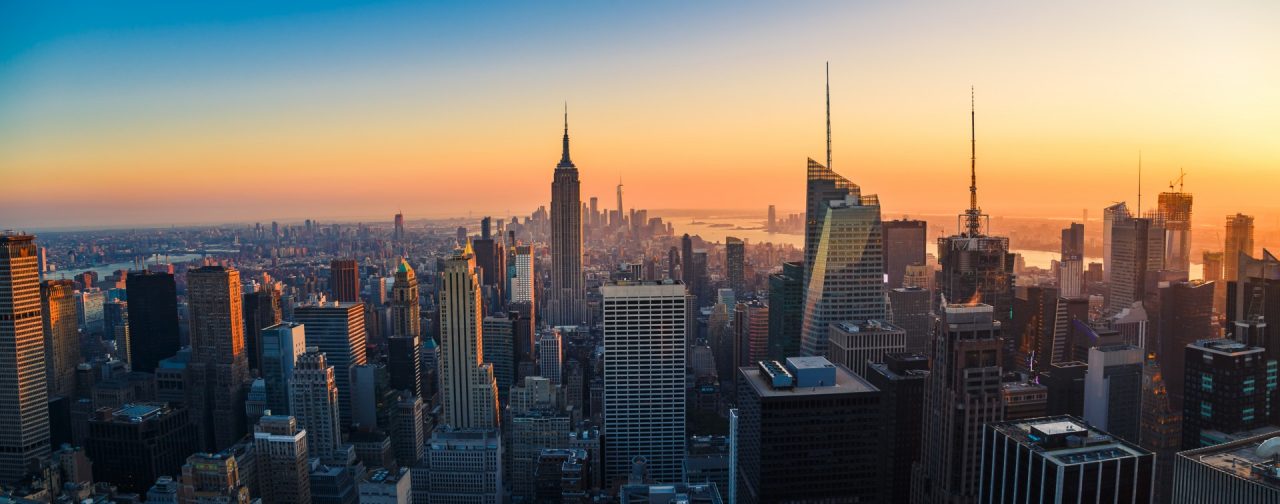New York City’s latest race to the sky is located between the green oasis of Madison Square Park and the Yellow subway line that cuts across Manhattan diagonally from North to South, like Broadway.
At a time when the city’s majestic avenues are now emptied by Covid-19, restaurants are semi-deserted and stores can admit only a few shoppers at a time, New Yorkers look for inspiration from a new skyscraper. One Madison Avenue is a new office tower that has been transformed almost by accident into a symbol of the city’s resilience, thanks to the decision to kick off the construction work a few days ago — just when the metropolis is forced to deal with new safety measures because of the surge in the pandemic.
One Madison Avenue: the skyscraper symbolising rebirth
For investment size, architectural impact, and the current historical moment, One Madison Avenue is certainly the largest commercial real estate development project in the city since the outbreak of the pandemic last March. The new building, which should be completed in 2023, has a $2.3 billion price tag. The project calls for urban redevelopment as well as construction. In fact, 67% of the new complex will be made up of the original 19th-century structure of existing buildings that now occupy that street surface. The design by architectural firm Kohn Pedersen Fox Associates (KPF), which was commissioned to design the new skyscraper, calls for the 27-story glass tower rising atop the nine-story older buildings.
“We wanted to preserve the character of the original building but also open it up so we could extend the nature of the adjacent park through the tower,’ KPF’s Doug Hocking said. “When completed, we’re confident that One Madison will be a dynamic, inspiring workplace for the 21st century.’

One Madison Avenue in numbers
Original buildings on the lower floors, a roof garden overlooking Madison Square Park and a crystal tower rising out of the greenery.
For once the New York skyline is being rewritten from below, starting with shared spaces that will become the attraction point for the hundreds of people who will work inside One Madison Avenue. The building is designed for office space, but also has a huge space for an event room hosting 800 people, a possible market for handmade food products, and a fitness center.
All this in a structure of 1.4 million square feet (130,000 square meters). Over the next four years, about 3,000 people will be working on the construction site.
The project is being financed by SL Green Realty Corp., Manhattan’s largest office landlord, which has signed a joint venture with the National Pension Service of Korea and Hines, and negotiated a loan of $1.25 billion with a consortium of seven banks.
“Our commitment and belief in New York City is unwavering,” said Marc Holliday, Chairman and Chief Executive Officer of SL Green. “We are proud to be bringing an important new office development to Midtown South that we are confident will attract the top companies and talent.”
The bet on the future of Manhattan office space
The corner of 23rd and Madison Avenue, where the new skyscraper will rise, is nestled in the middle of Midtown, between the vibrant Union Square and Gramercy Park. A postcard of New York City where the Flatiron Building and the Empire State Building — icons of 20th-century architecture — alternate with sleek wall glass facades and ethnic stores.
The Big Apple is starting over right here, reacting to the whiplash of Covid-19 that has brought the real estate sector to its knees. According to the New York Post, 85% of the office space in the metropolis today is empty, despite being 88% licensed, demonstrating the developer’s confidence in the future prospects of One Madison. SL Green reiterates, however, that it is convinced that the market will recover by the time the skyscraper is inaugurated in 2023.
Special attention has been paid to environmental sustainability. The decision to build the new tower without completely demolishing the existing structures is only one way the design focuses on urban regeneration and environmental protection. This principle is also reflected in the plan for a building that fully complies with LEED-Gold certifications, the highest in terms of sustainability.
New York City accepts the bet. How could it be otherwise in the city that never sleeps? The pandemic has managed to bring the economy of even New York City to its knees. Unemployment rose as high as 16% earlier this year, and personal income tax revenue is expected to fall by $2 billion this year, while on the tourism front only a third of hotel rooms in the city are occupied. This situation risks having an impact on the Metropolitan Transit Authority’s investment plans to improve the city’s public transport.
Faced with all this, and pending a vaccine that will allow the city and the world to wake up from the nightmare, New York City does not want to give up. It is responding in the only way it knows how. With a new sustainable skyscraper. And with the glittering lights at Saks Fifth Avenue shining more brightly than ever, to remind everyone that Christmas is coming.

